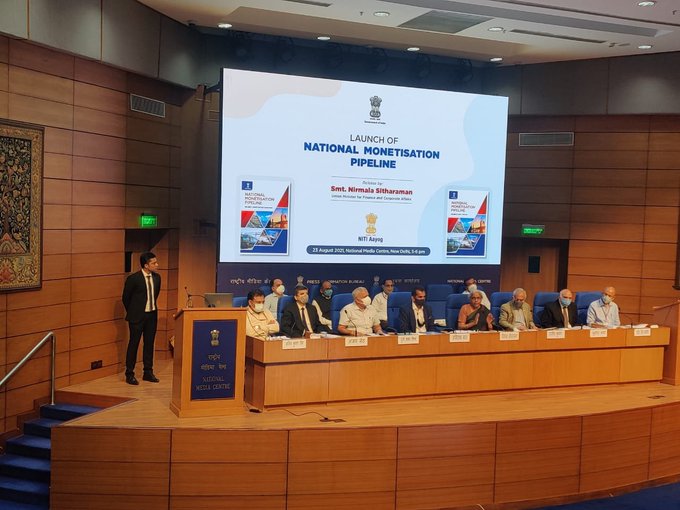
National Monetisation Pipeline (NMP) estimates aggregate monetisation potential of Rs 6 lakh crore through core assets of the Central Government, over a four-year period, from FY 2022 to FY 2025.
Business Desk
On August 23 Union Minister for Finance and Corporate Affairs Nirmala Sitharaman rolled out the asset monetisation pipeline of central ministries and public sector entities: National Monetisation Pipeline (NMP).
The pipeline has been developed by NITI Aayog, in consultation with infrastructure line ministries, based on the mandate for ‘Asset Monetisation’ under Union Budget 2021-22. NMP estimates aggregate monetisation potential of Rs 6 lakh crore through core assets of the Central Government, over a four-year period, from FY 2022 to FY 2025.
The Union Budget 2021-22 has identified monetisation of operating public infrastructure assets as a key means for sustainable infrastructure financing. Towards this, the Budget provided for the preparation of a ‘National Monetisation Pipeline (NMP)’ of potential brownfield infrastructure assets. NITI Aayog in consultation with infra line ministries has prepared the report on NMP.
NMP aims to provide a medium-term roadmap of the programme for public asset owners; along with visibility on potential assets to the private sector. The report on NMP has been organised into two volumes. Volume I is structured as a guidance book, detailing the conceptual approaches and potential models for asset monetisation. Volume II is the actual roadmap for monetisation, including the pipeline of core infrastructure assets under Central Govt.
Framework
The pipeline has been prepared based on inputs and consultations from respective line ministries and departments, along with the assessment of total asset base available therein. Monetization through disinvestment and monetization of non-core assets have not been included in the NMP. Further, currently, only assets of central government line ministries and CPSEs in infrastructure sectors have been included. Process of coordination and collation of asset pipeline from states is currently ongoing and the same is envisaged to be included in due course.
The framework for monetisation of core asset monetisation has three key imperatives.
- Monetization of Rights Not ownership, Assets handed back at the end of transaction life
- Brownfield de-risked assets, stable revenue streams
- Structured partnerships under defined contractual frameworks with strict KPIs and performance standards.
This includes selection of de-risked and brownfield assets with stable revenue generation profile with the overall transaction structured around revenue rights. The primary ownership of the assets under these structures, hence, continues to be with the Government with the framework envisaging hand back of assets to the public authority at the end of transaction life.
